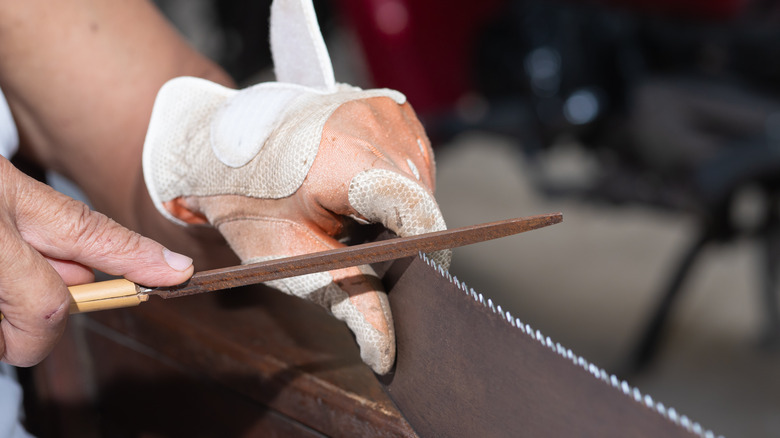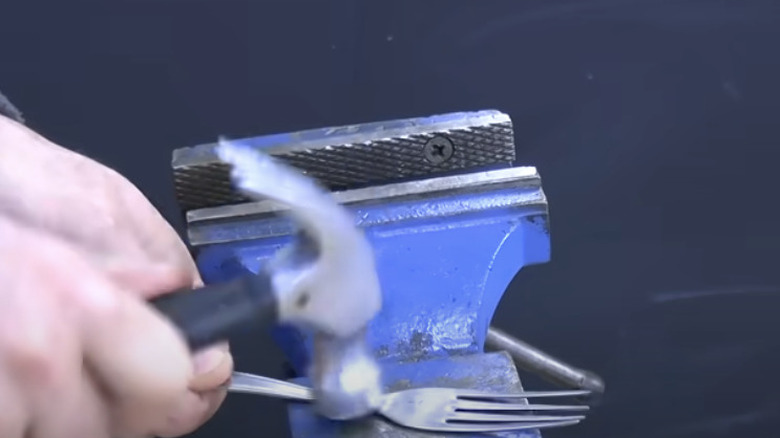Think Twice About Using A Fork Sharpening Hack On Your Saws At Home
We may receive a commission on purchases made from links.
Any list of saws that can cut through wood will generally include rip saws, cross-cut saws, and perhaps tenon saws and keyhole saws, plus the usual power tools. Each of the saws mentioned is a type of handsaw. They are low-cost, versatile solutions to a host of cutting tasks around the house and yard. Recently, a fork sharpening hack for saws has been getting a lot of traction on YouTube. However, there are also a number of comments that suggest you may need to think twice before using it. So, this is just the sort of thing that needs some in-depth investigation.
YouTuber @Mraeasy-bb1vs has a whole bunch of helpful videos and over 50,000 subscribers, which might suggest he knows what he is talking about. Unfortunately, although everything in the video works to some extent, there are serious flaws in the way the information is presented. It results in the whole thing being rather misleading, especially that attention-grabbing headline. Bottom line is that you cannot sharpen your saw with a fork. No way, no how.
What saw blade is used in this hack, exactly?
The method is questionable right from the start, with a lack of understanding about how some saws work. Handsaws may look simple, but they don't all work the same way. Most saws cut on the push stroke. The sharp part of the teeth points forwards. However, some (not surprisingly called pull saws) work the other way. The teeth point backwards. A few, like the universal hand saw recommended on TikTok, cut both ways, although these are in the minority.
If you check the start of the video, @Mraeasy-bb1vs is ferociously pushing the saw with little effect to show that it's blunt, but when you see the teeth in closeup, it's obvious that what he's using is a pull saw. It isn't meant to cut the way that's being demonstrated. We move on, and surprisingly, from about the 17-second mark in the video, the presenter uses a vise and a file and adopts the classic technique widely accepted as one of the best ways to sharpen any handsaw. There's absolutely nothing wrong with this part of the video, but there's not a fork in sight.
Finally, the famous fork phase
When the fork makes its appearance, it is battered into submission, sawed, and filed to create a custom tool from an ordinary piece of cutlery. Except, it isn't a tool for sharpening handsaws: What he's made is a saw tooth setter.
To explain, we have to dip into handsaw design again. Push handsaws come in two types: rip saws and cross-cut saws. The teeth on a rip saw all run in a straight line. The teeth on a cross-cut saw are offset. Half of them tilt to the left, and half to the right. Over time, these teeth can get flattened or pushed out of shape, and you need a saw tooth setter to fix that.
@Mraeasy-bb1vs gives a perfect demonstration of how this is done late in the video and the tool works well. The fork hack could save you money because a high-quality saw tooth setter costs around $25. Nevertheless, at no point in the video is a fork ever used to sharpen a saw: It can't be done.

